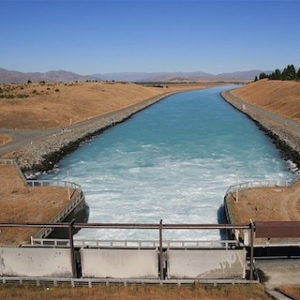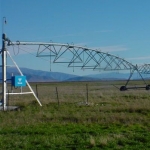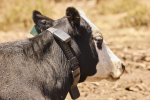The drought conditions that affected both the North and South Islands in 2012-13 wiped more than $1billion dollars from the economy.
"This summer once again highlights the need to fast track alpine-fed water storage infrastructure in both the South and North Islands," says IrrigationNZ chief executive Andrew Curtis.
Alpine-fed water storage is replenished by rainfall and snowmelt within the alpine environments in contrast to streams and rivers that are fed by foothills rainfall. Alpine rainfall is more consistent and plentiful than foothills and plains rainfall and is therefore more suitable for providing reliable water supply.
"Despite the focus upon irrigation development over the past five years, New Zealand has made very limited progress in this space. We have modernised and improved our irrigation distribution systems but have failed to invest in alpine water storage to our detriment," says Curtis.
Irrigation restrictions are now widespread in Canterbury and Otago, with Hawke's Bay dry but maintaining flows.
One of the worst hit areas is South Canterbury with the Opuha Dam, a foothill-fed river catchment, facing unprecedented water shortages. Opuha's lake level is of major concern, says Opuha Water Supply Ltd chief executive, Tony McCormick.
"Our situation and outlook have not improved and the lake level continues to drop steadily. Today the lake is at 31% full. We are currently on 25% irrigation restrictions and expect to move to 50% restrictions next week when the lake hits another 'trigger' level of 25% full. Our current predictions suggest that the lake could be fully depleted by the end of February."
McCormick says while the initial problem was a lack of stored water, the situation is now being compounded by the very dry conditions being experienced across the South Canterbury region.
The Ashburton River is on full restriction, which has forced the Ashburton Lyndhurst Irrigation Company to place shareholders on 85% allocation. However ALIC scheme manager Jess Dargue says the Alpine-fed Rangitata River is currently flowing at a healthy level due to good rainfall in the Alps over the New Year.
In North Canterbury, some rivers are on restriction, although Amuri Irrigation Limited CEO Andrew Barton says both the Waiau and Hurunui, both alpine rivers, are maintaining flows so scheme restrictions look unlikely in the near future.
While there are no restrictions on major irrigation schemes in the Lower Waitaki at the moment, all fed by the Waitaki River, an alpine river with storages built for hydropower, Elizabeth Soal, policy manager of the Waitaki Irrigators Collective, says partial restrictions affecting independent irrigators are in effect on hill-fed tributary rivers including the Hakataramea, the Maerewhenua and the Awakino. There are also restrictions (some full restrictions) on some of the South Canterbury Coastal streams and waterways, including parts of the Waihao River, Buchanans Creek and the Sir Charles Creek.
In Otago, supplementary permits off the Kakanui River have ceased with the first minimum flow alert being active, and the river is approaching its absolute minimum flow, which would mean full restrictions kick-in.
Parts of North Otago are extremely dry, with the area receiving a third of the historical average rainfall since August.
"For us down here, it's much, much drier than in 2012-13. Some are saying it's the driest it's been in 10 years, so the restrictions will bite even harder," says Soal.
For IrrigationNZ the answer is obvious, "We're losing sight of the prize that reliable alpine-fed irrigation water storage could bring to both the environment and economy. Certainty of water supply allows investment in SMART irrigation technologies that greatly improve nutrient management and production," says Curtis.



















